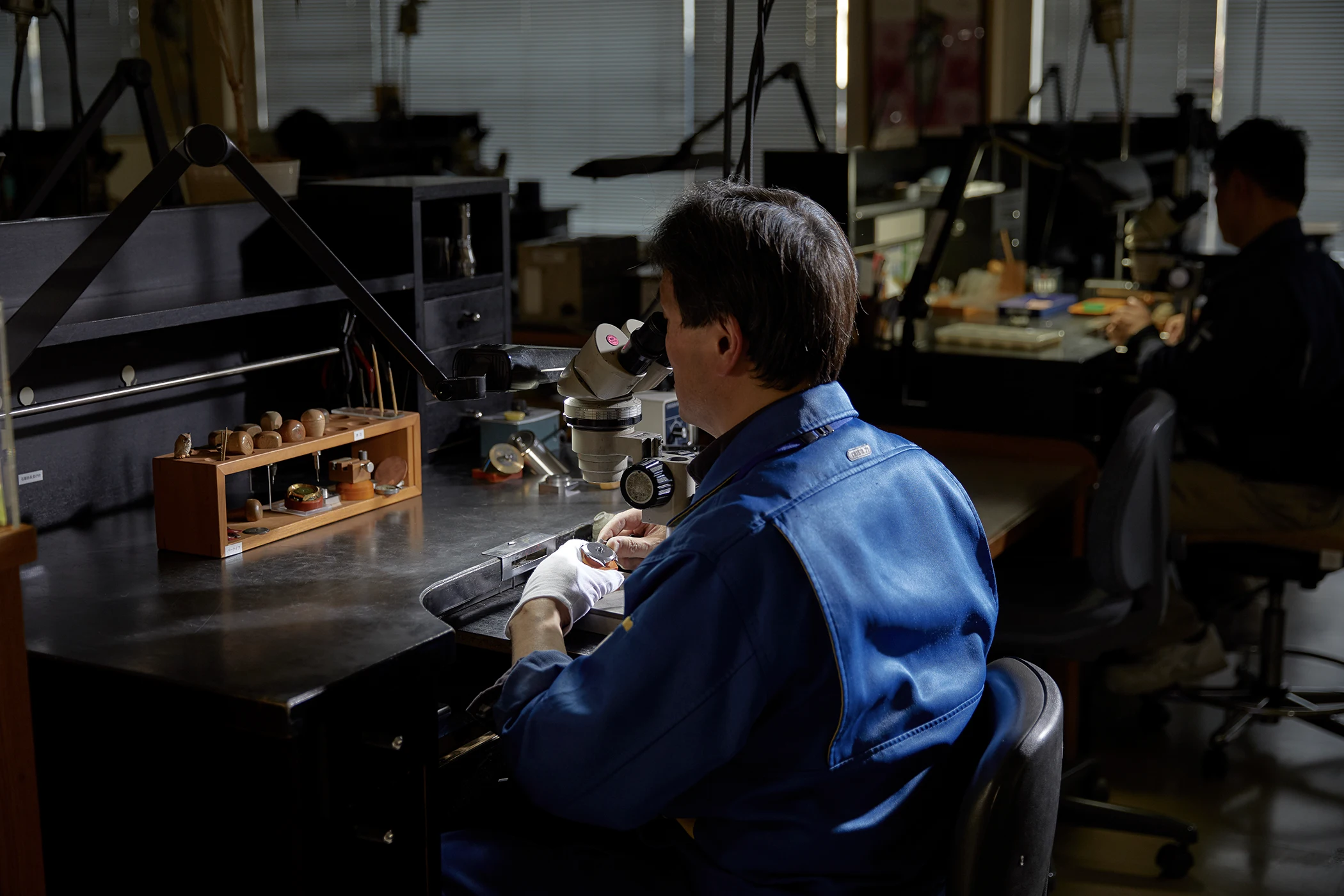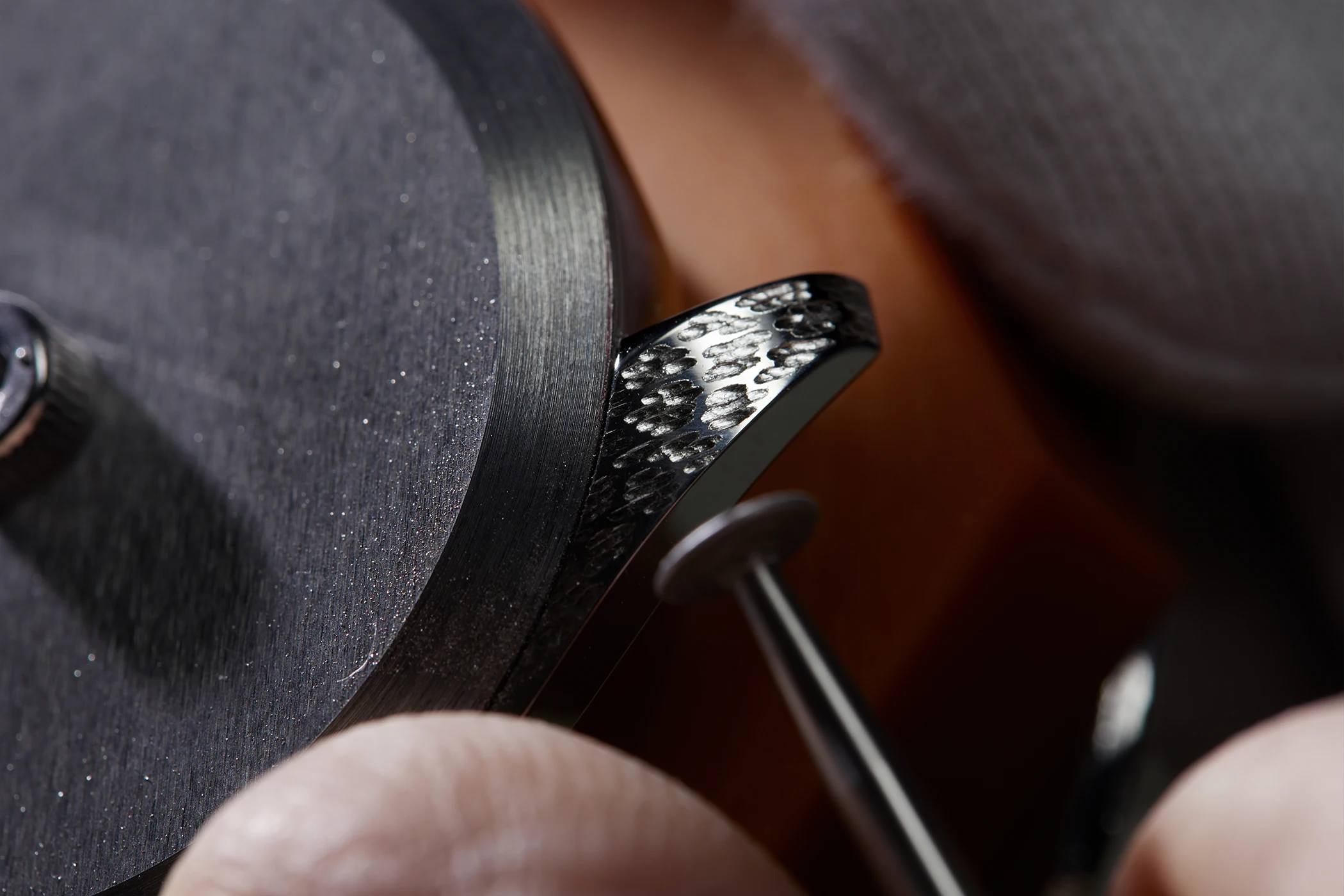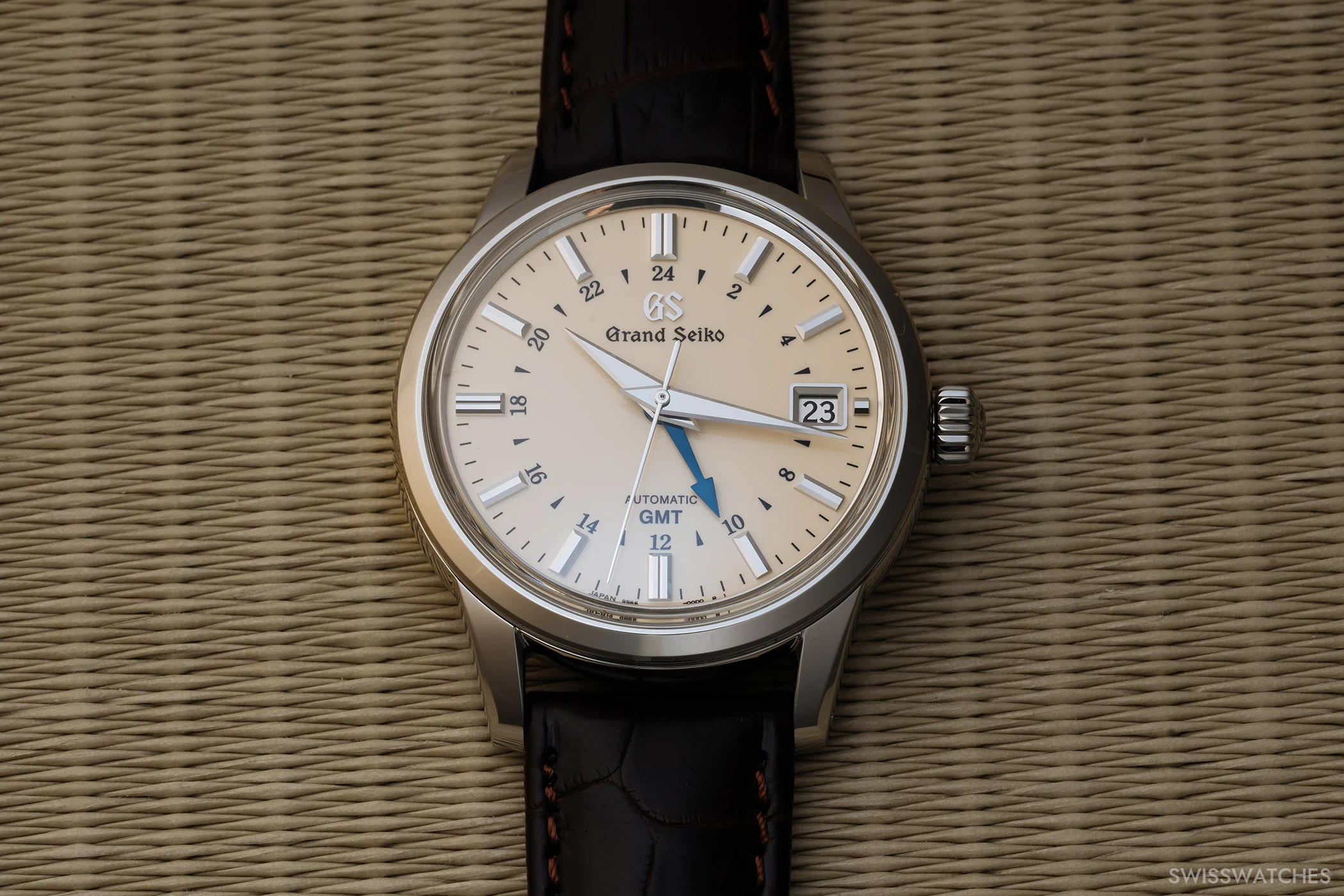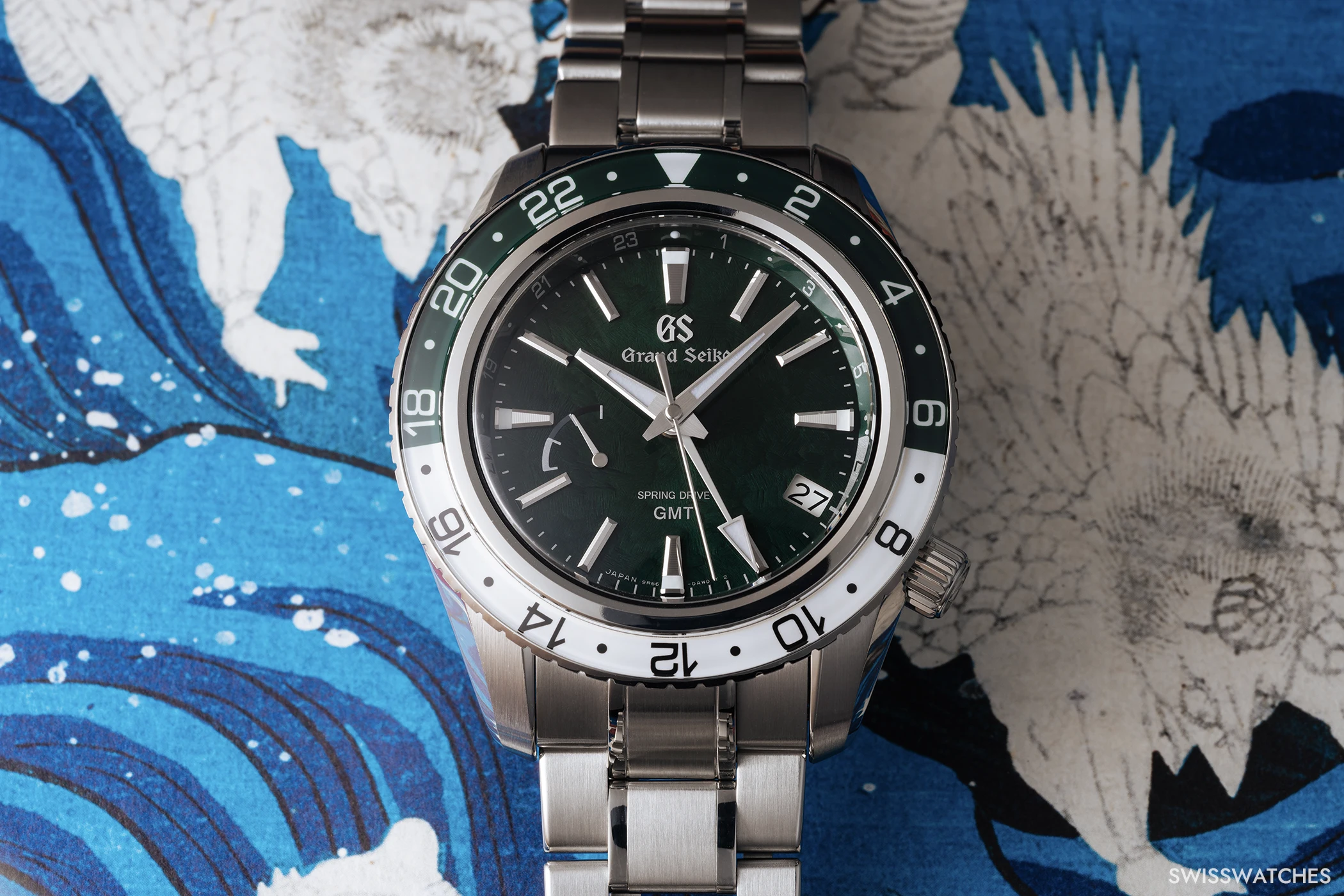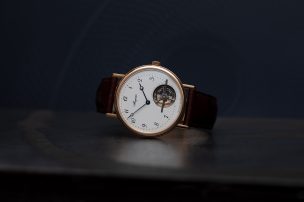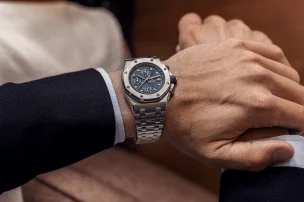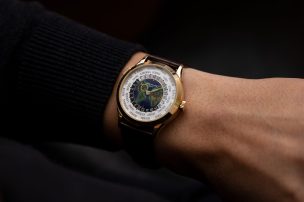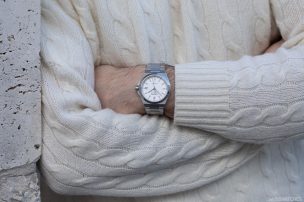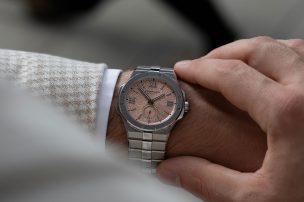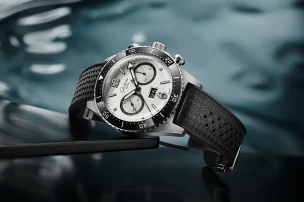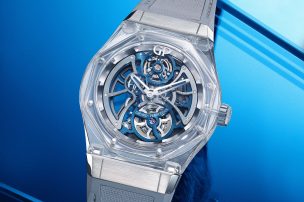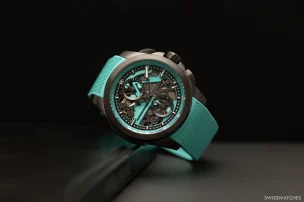

Grand Seiko: The Japanese Giant
Mangas here, sushi there. Zen Buddhism meets street style, and the crowds of Tokyo’s Shibuya district meet the snowy dreamscapes of Hokkaidō. There’s no doubt about it: viewed from afar, Japan conjures up a wide variety of associations. Clichés mingle with nostalgia, but in the end, what unites them all is the conviction that faraway Japan is a very special country. However, very few people have Japan on their radar as a major watchmaking nation. Realistically speaking, most people even regard the Far East as an enemy of classic watchmaking. You don’t have to write for Swisswatches Magazine to ask: well, who was the first to commercialise quartz technology for wristwatches and launch the 35SQ in 1969? That’s right, the Japanese. More precisely: Seiko.
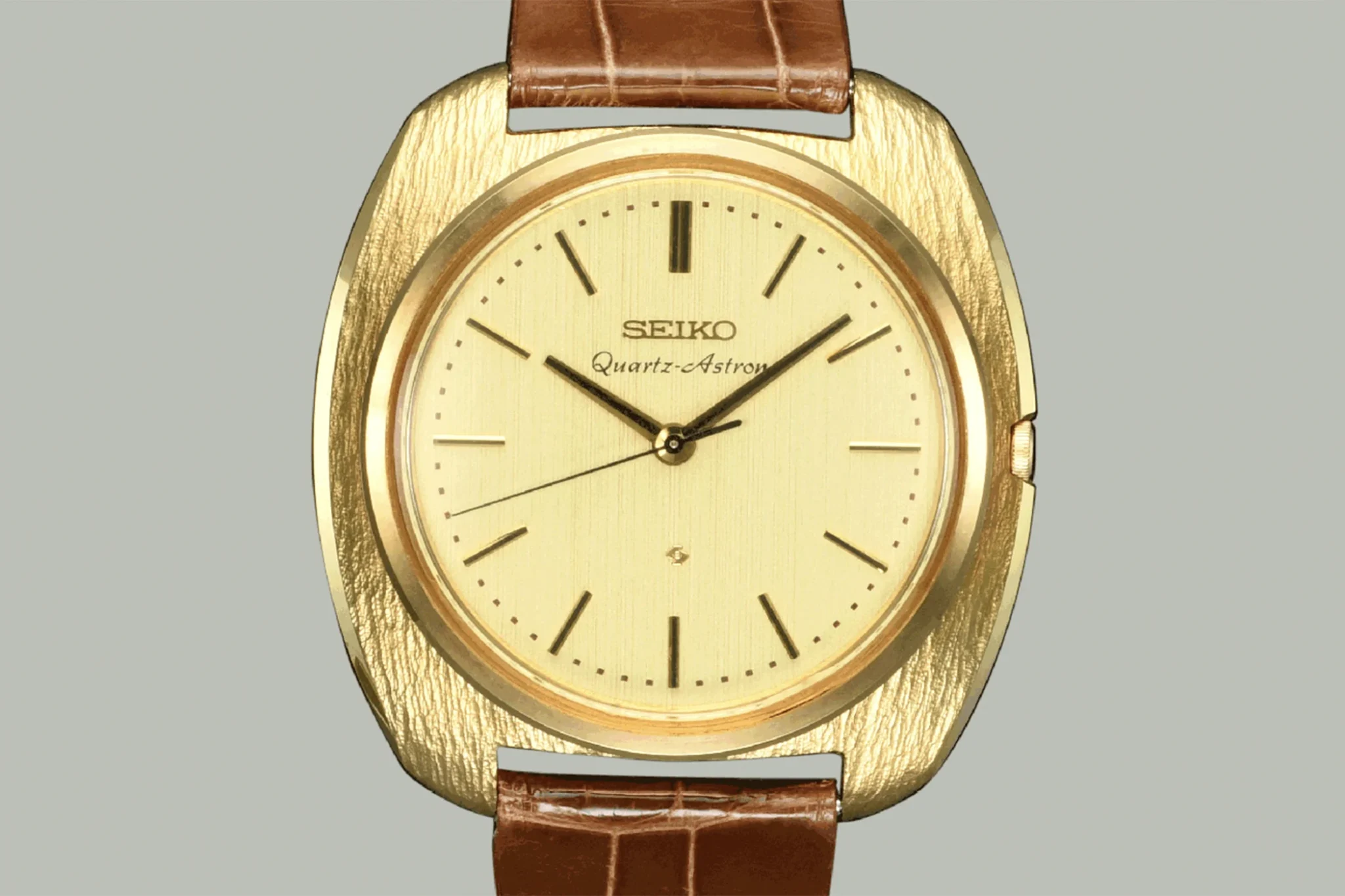
Seiko 35SQ from 1969
This brings us to Grand Seiko. The manufacture is far more than a prestige project of the watch group. Rather, it is a testament to the confidence and expertise of Japanese craftsmanship. The brand is 65 years old this year, meaning the first Grand Seiko was produced nine years before the launch of the first ever quartz watch. Grand Seiko recently launched the model ‘SLGH027’. The official watch model names of the company are admittedly a little cumbersome, but the nicknames and the inspiration for the dials are all the more sensual. Model SLGH027, for example, is not just another reference. Rather, the steel watch brings together an award-winning automatic calibre with an ice-blue aesthetic inspired by the wintry ridges of Iwate Mountain. It’s a limited edition watch that, for many reasons, represents pretty much everything that characterises Grand Seiko. After all, Iwate lies within sight of one of the places where the ambition and creativity of the employees culminate in horological innovations: Grand Seiko Studio Shizukuishi.

Grand Seiko SLGH027
We had the chance to visit the manufacture to see for ourselves what makes Grand Seiko a watch brand to be taken seriously by enthusiasts of high-quality timekeepers.
Mechanical watches, spectacular architecture: Grand Seiko Studio Shizukuishi
The journey north from Tokyo to Morioka on the Shinkansen express train takes around two hours. Five years ago, Grand Seiko opened the Grand Seiko Studio Shizukuishi, designed by star architect Kengo Kuma, in the middle of a biotope near the town. Insect hotels sit peacefully outside the doors of the building made of glass, cedar and pine wood, while inside, watchmakers assemble the mechanical timepieces in the collection.

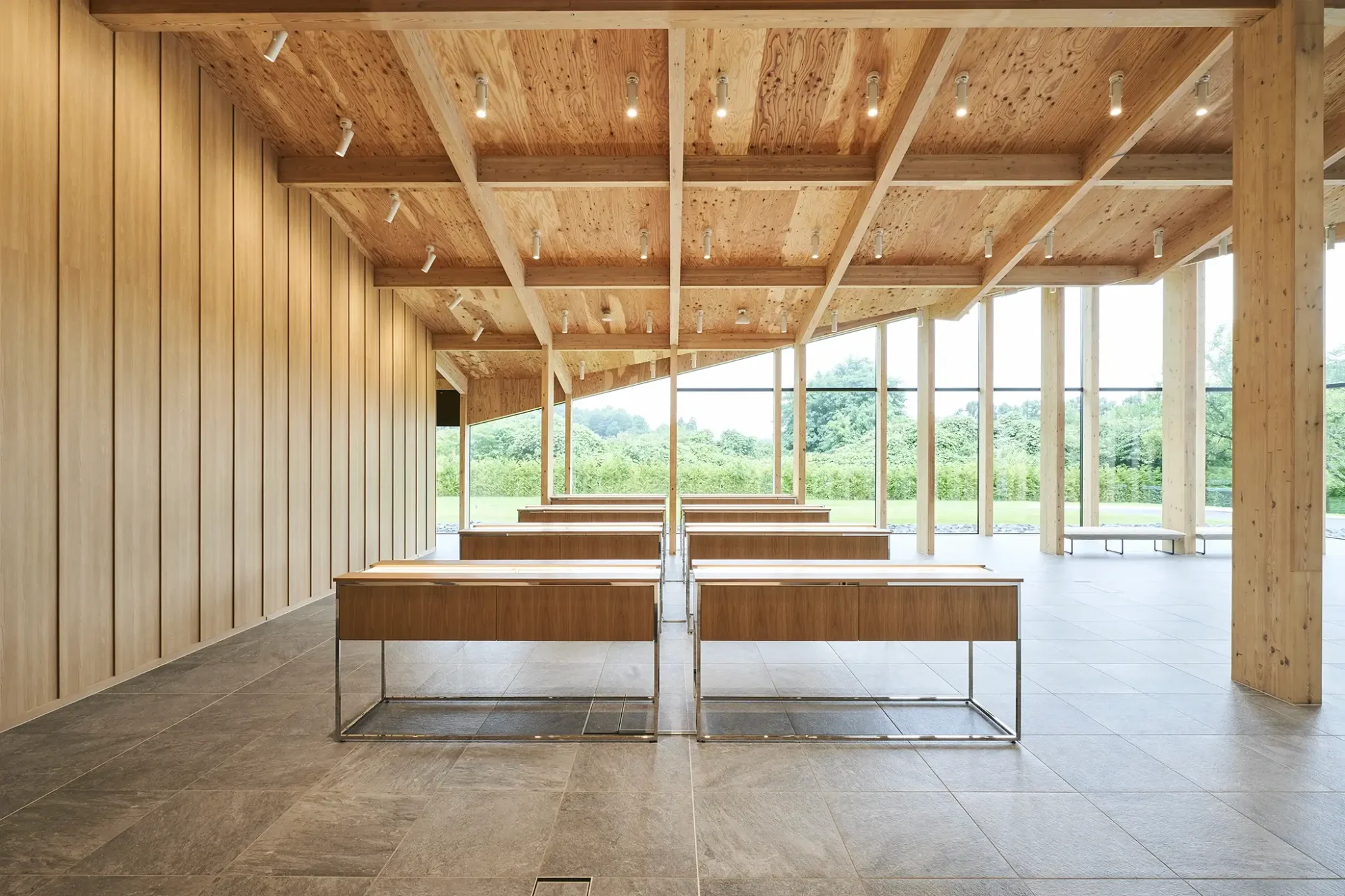
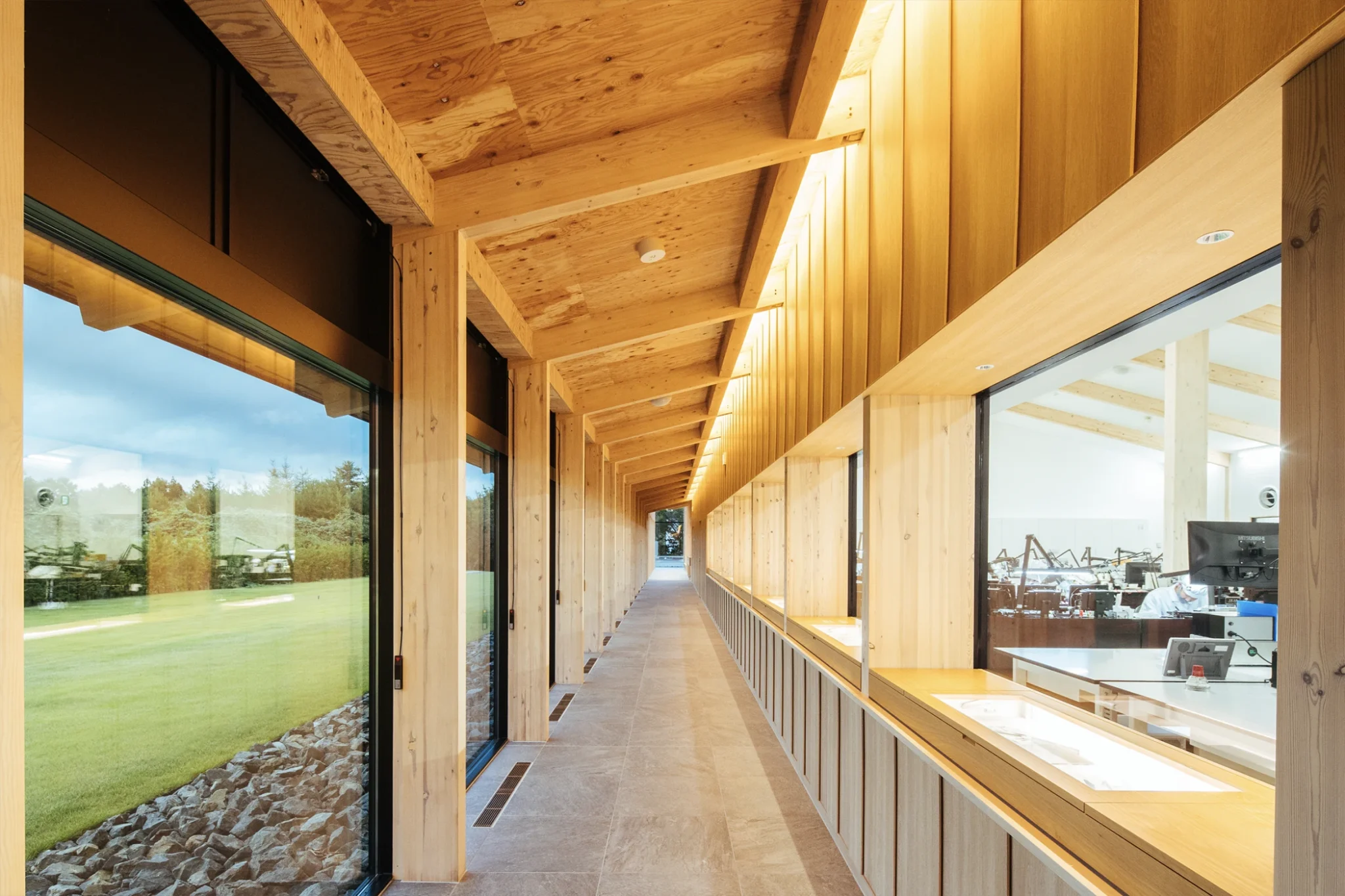
Coming back to the SLGH027, with its textured dial inspired by the ridges of Mount Iwate, is powered by the 9SA5 calibre, which has a power reserve of 80 hours despite its high-frequency movement with 36,000 vibrations per hour. Two things come together here that are typical of Grand Seiko. On the one hand, an aesthetic that feels connected to the brands philosophy ‘The Nature of Time’. It is not without reason that some of the company’s best-known models feature dials inspired by the structure of the birch forests surrounding the studio (including SLGH005 and SLGA009), celebrate the fascination of cherry blossom (SBGA413), or take up the emerald green colour of the Atera River (SLGA025). In terms of technology, the company sets itself the highest standards. For example, high-beat movements are favoured because they ensure greater accuracy. And the reason for not yet using silicone components, in contrast to the Swiss competition, is that it is not yet possible to guarantee the reliability that is essential for a Grand Seiko.

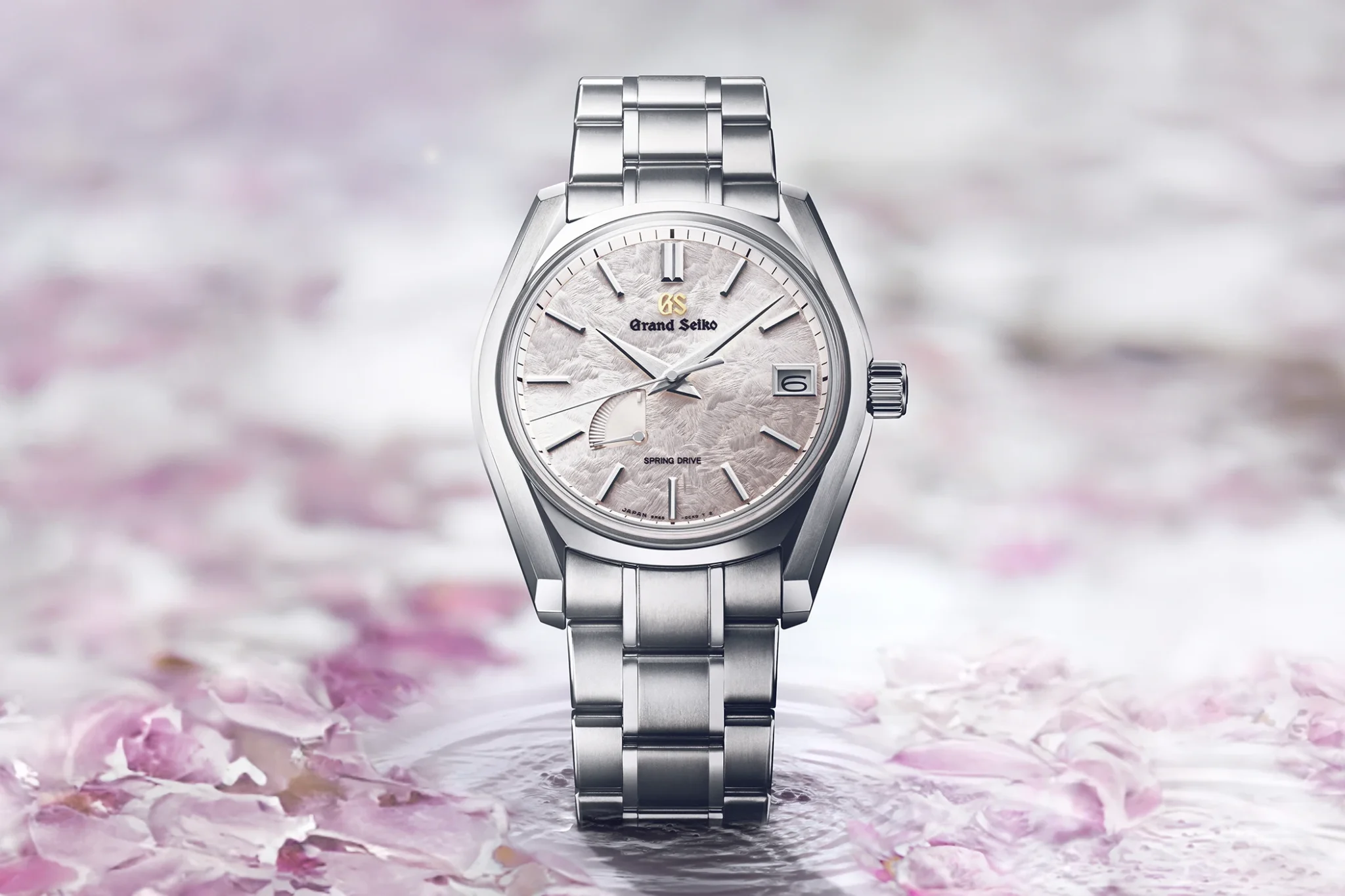
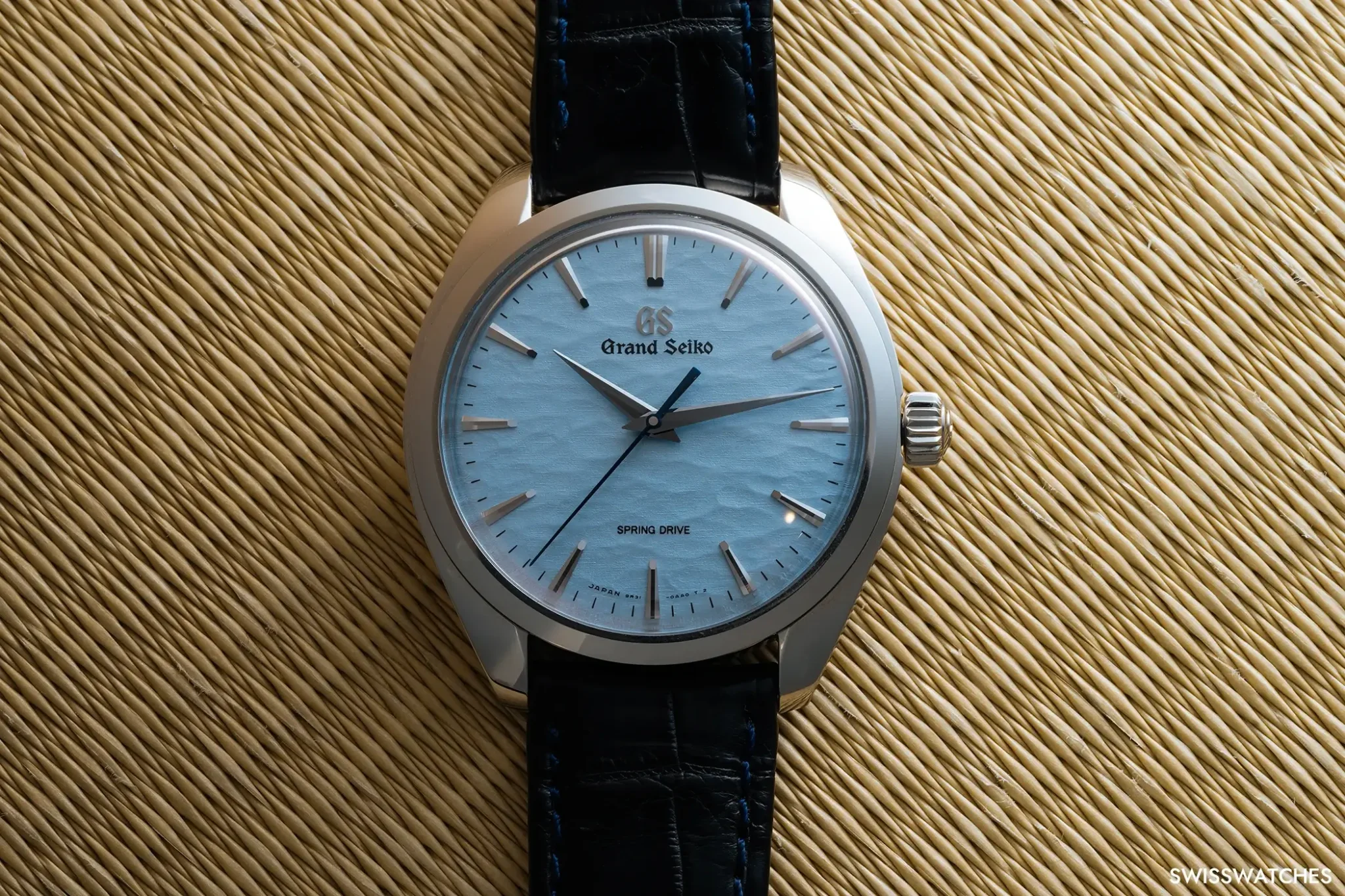
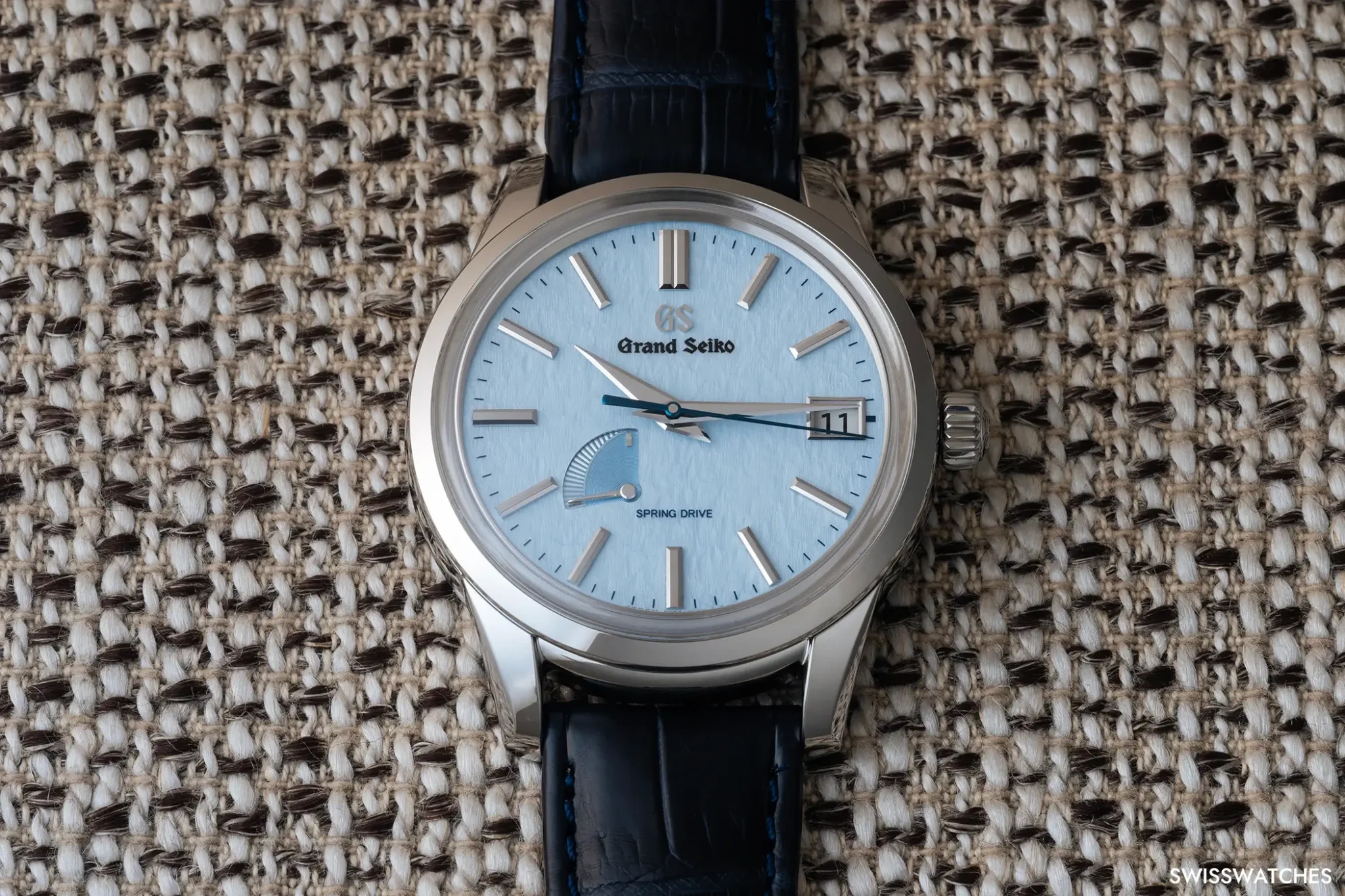
SLGH005, SBGA413, SBGY007G and SBGA407G (from top left to bottom right)
The vertical range of manufacture of 100 percent is also very impressive, as is the meticulousness with which employees are trained. In this way, the employees here gain more and more experience in order to collect certificates in the in-house hierarchy and thus make a career for themselves. There are 700 employees here in Shizukuishi, 50 of whom are watchmakers, but only four of them have reached the highest ‘Gold’ level. However, all of them are regularly tested for their skills, because the entire team should – and must – deliver top performance. In this context, brand boss Akio Naito speaks of the Japanese principle of ‘Dou’, which can be translated as ‘the way’, and ultimately describes the endeavour to achieve excellence in every detail of a task. Grand Seiko’s self-image also includes the fact that the mechanical timepieces are tested for accuracy in a wide variety of positions, which even exceeds the standards of the Swiss COSC certification.

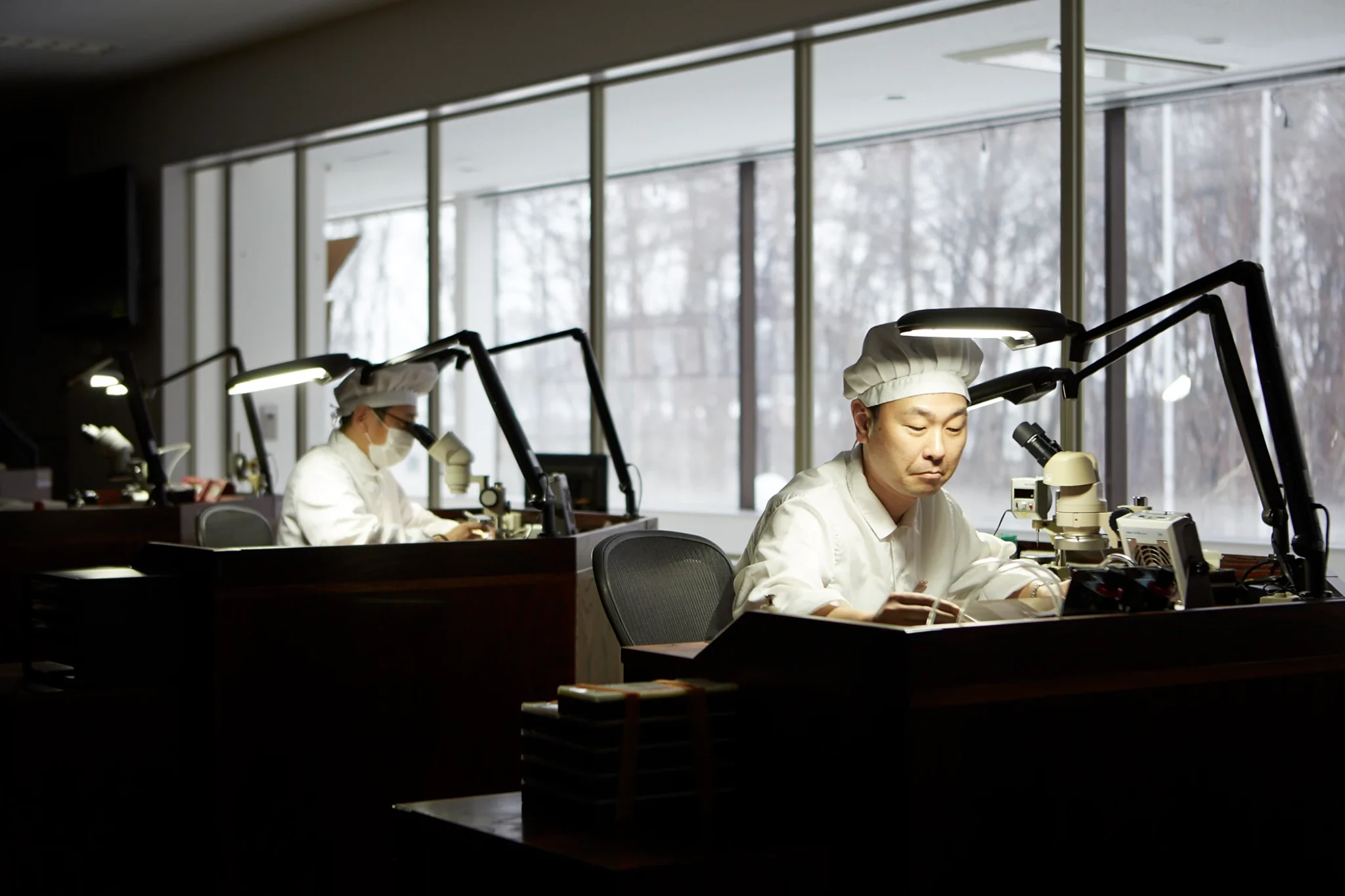
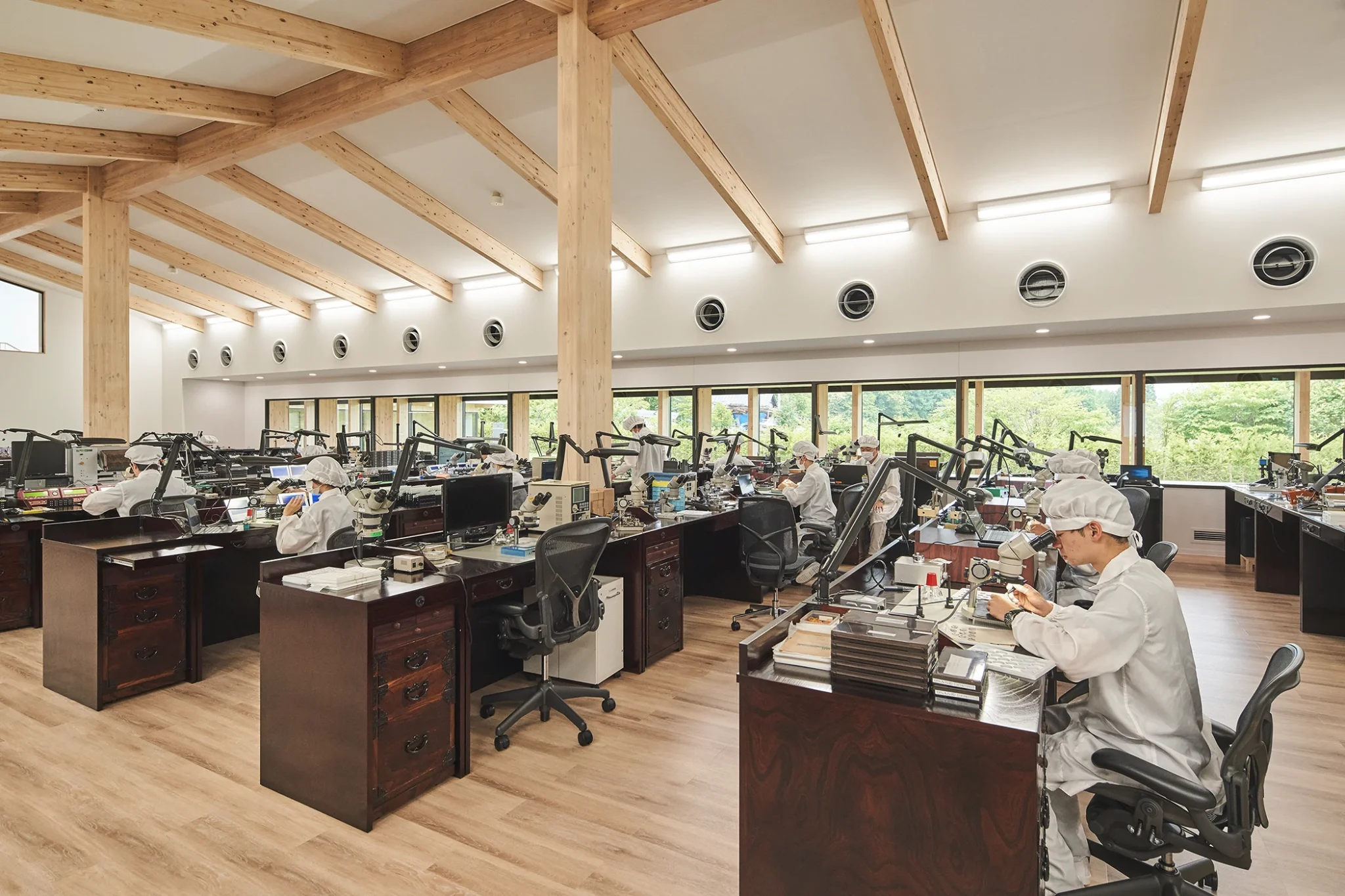
A family history: Grand Seiko, the Hattoris and Japanese watch culture
The way Grand Seiko presents itself around the world today is still strongly characterised by Kintaro Hattori, who started out as a capable businessman in 1881 with what is now a company with thousands of employees – and is currently run by the fourth generation of his great-grandson, Shinji Hattori.

Seiko Group Corporation Director, Chairman of the Board, Shinji Hattori
Today, visitors to the Seiko Museum in the Ginza district of Tokyo can watch a film that presents the entrepreneurial struggle and rise of the first Hattori. He started out at the end of the 19th century as a simple trader with a small shop and workshop for pocket watches and clocks made in the West. A wholesale business was added, and in 1892 a wall clock factory called ‘Seikosha’, where ‘Seiko’ means ‘precision’ and ‘sha’ means ‘house’. Even then, Hattori was already training skilled craftsmen in his own academy. Always be one step ahead of the competition: this mantra coined by Hattori is still an integral principle today.
The fact that the group, and therefore also Grand Seiko, now has various locations throughout the country and is also highly respected by the population has a lot to do with the great Kantō earthquake of 1923, which completely destroyed the first wall clock factory. Today, the brand is unmistakable in the middle of the elegant Ginza district: the Wako building between Tokyo’s skyscrapers is a landmark of the city with its large clock tower, but the devastating consequences of the earthquake taught the Hattoris at the time to think – and produce – in a decentralised manner. At the same time, the company’s handling of the earthquake shaped its honourable image: each of the 1,500 or so clocks that were in the factory at the time of the disaster was duly replaced for customers.
The year 1960: Grand Seiko launches its first watch
Precision, durability and aesthetic beauty have always been among Seiko’s core values, as evidenced by elegantly designed and well-made watches such as the ‘Marvel’ and ‘Crown’ from the 1950s. But in 1960, the company went one step further: for the first time, a watch was presented under the name ‘Grand Seiko’ that was equipped with the new 3180 calibre, which had, among other things, a stop-seconds function and impressed with an accuracy of +12 to -3 seconds per day and a power reserve of 45 hours. According to Grand Seiko, it was also the first watch made in Japan to meet the standards of the Bureaux Officiels de Contrôle de la Marche des Montres in Geneva—then the most respected chronometer testing body—based on the brand’s own in-house certification process. This watch can be seen as a self-confident statement towards Switzerland, but above all, it demonstrates Grand Seiko’s determination to establish an independent brand in the top segment.
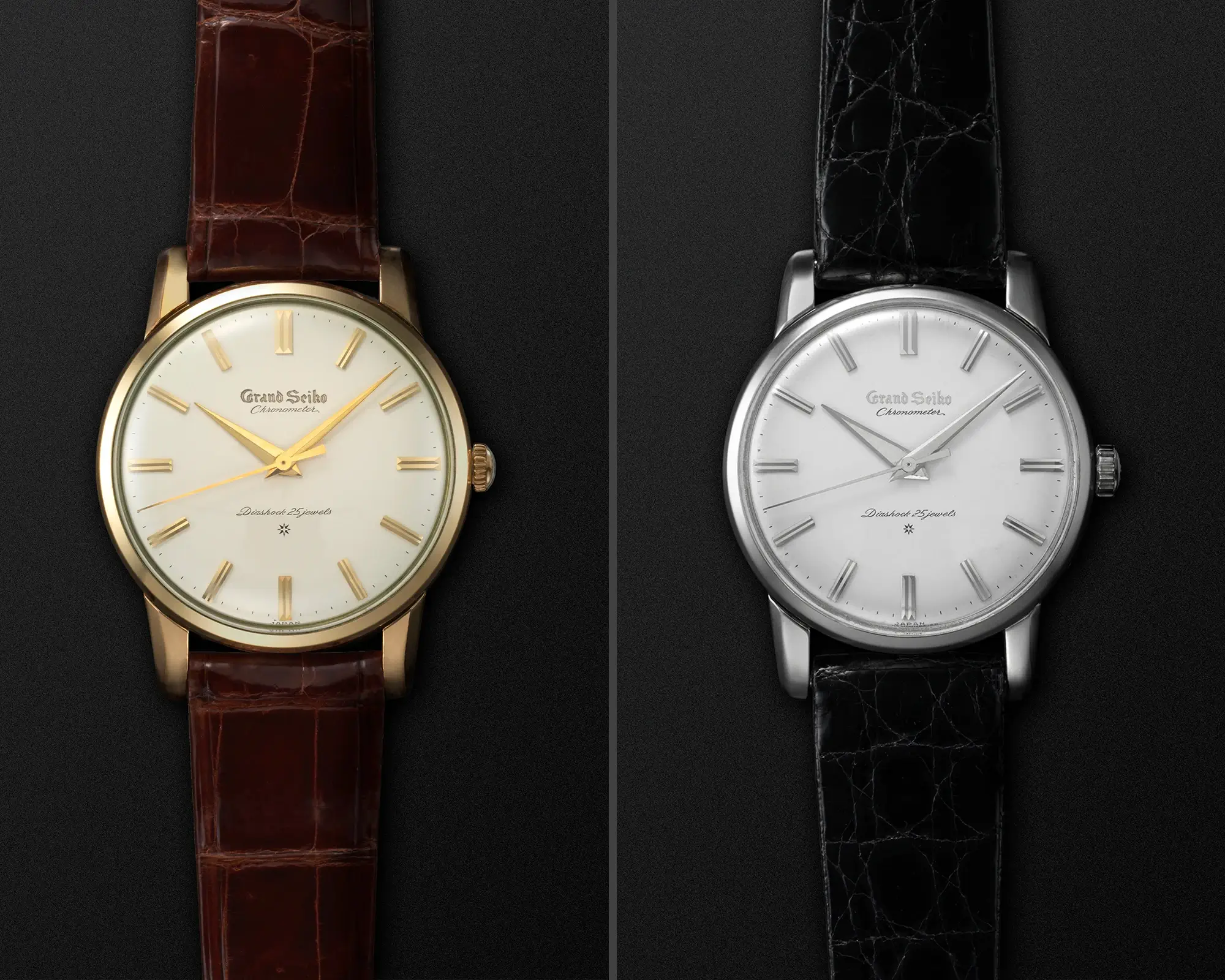
Grand Seiko from 1960 with calibre 3180
A worthy successor followed in 1964 with the ‘Self-Dater’ with a quick-set date function and improved water resistance of up to 50 metres. The 44GS, presented in 1967, is considered to be particularly influential in terms of its aesthetics, and the design codes of this watch can still be found in the current collection today. Another milestone followed in 1968 with the 61GS – the first automatic model with a high-beat calibre.
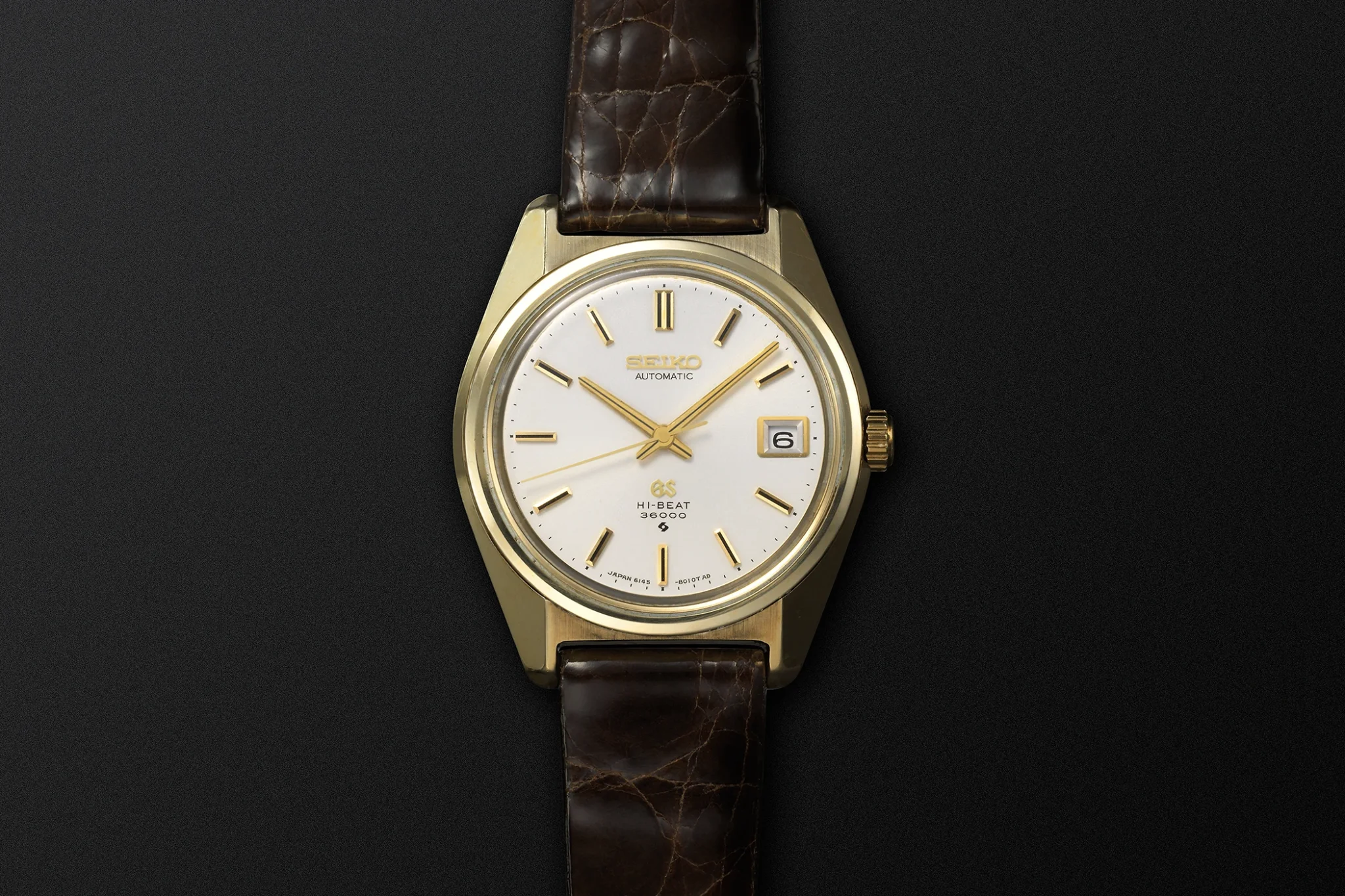
Grand Seiko 61GS from 1968
Spring Drive: A technology as a unique selling point
Beyond impressive achievements in the world of mechanical watches, there is one very important unique selling point that sets Grand Seiko apart from its competitors from Biel, Schaffhausen and Geneva: the Spring-Drive movements. The technology was first patented by Seiko at the end of the 1970s and the first timepiece was presented in 1999. Since then, Spring Drive models have combined both the sensuality and the traditional energy source of mechanical movements with the precision of quartz models.
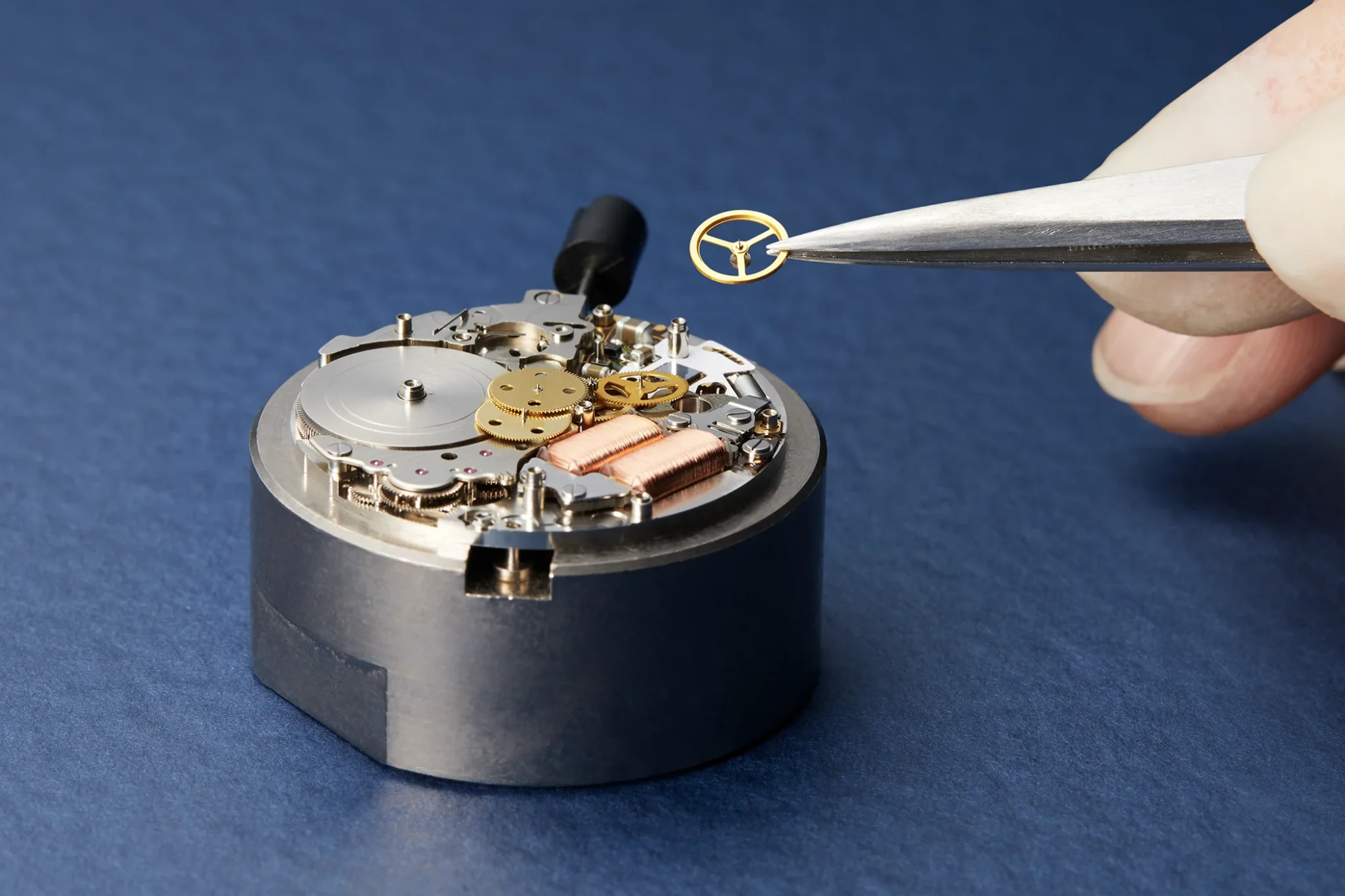
Spring-Drive references do not require a battery, and most of the components can also be found in mechanical calibres, but the big difference is the regulating unit: instead of an escape wheel with escapement, a so-called ‘glide wheel’ is employed, which is regulated and braked by a quartz crystal oscillator and switching circuit.
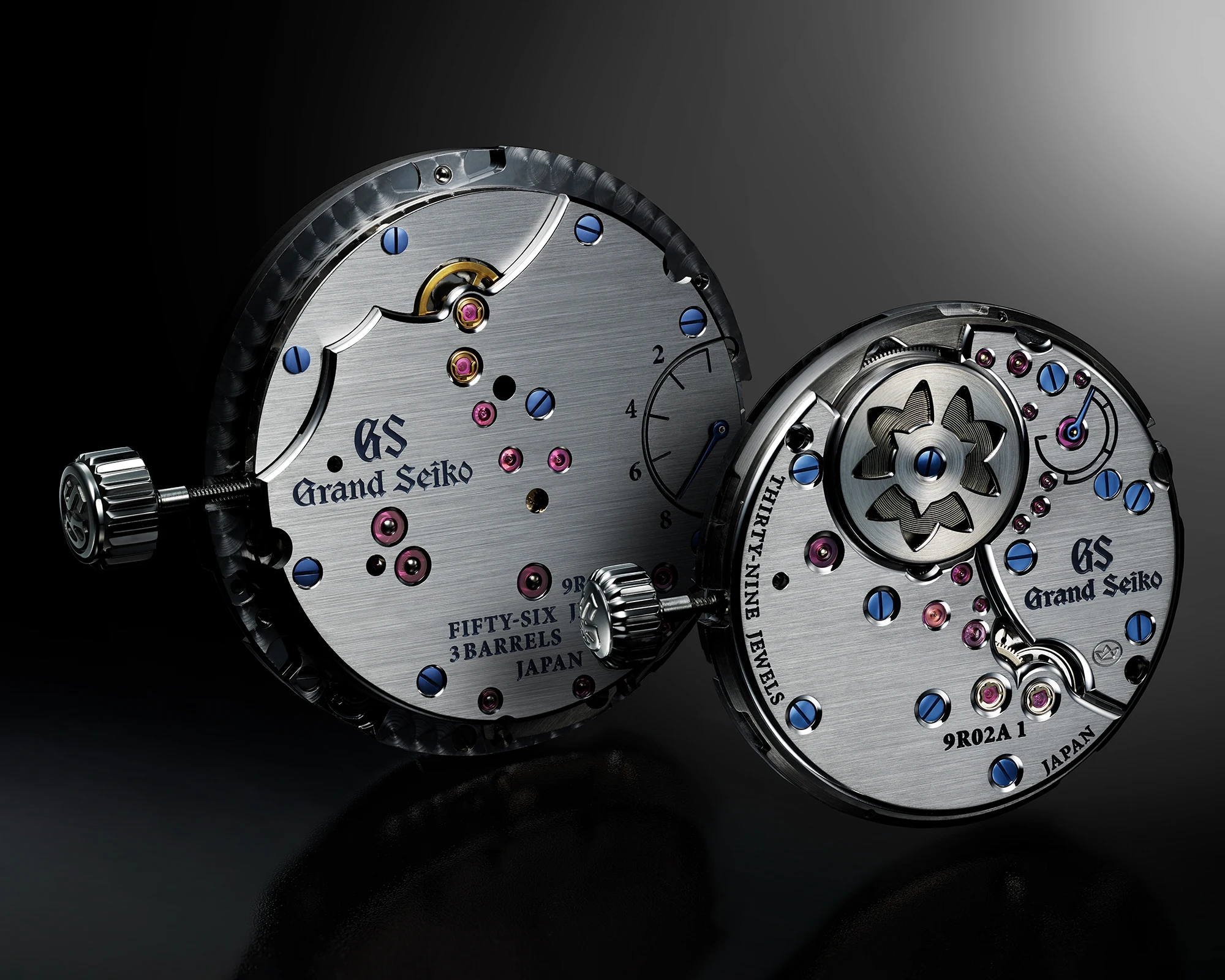
The Spring Drive models are manufactured in Shiojiri in Nagano Prefecture at the Shinshu Watch Studio. In the functional-looking halls, work is carried out to the same high standards that apply everywhere else across the brand’s cosmos. Even the smallest indices are applied to the dial by hand, each movement is animated by steady hands, and each case is polished to a shine with a meticulous eye in line with the rules of Zaratsu polishing. There is also the jewelry studio for complex enamel work and gem-setting, and work is also carried out on models for the Seiko Corporation brand Credor.
Grand Seiko boss Akio Naito sees the Spring Drive models as the brand’s big joker: ‘Yes, the technology is particularly in need of explanation outside of Japan. Particularly in Europe, the misinterpreted proximity to the cheaper quartz movements often requires detailed explanations. But yes, Spring Drive is also typically Grand Seiko – and an absolute highlight, especially for the younger generation of watch collectors.’
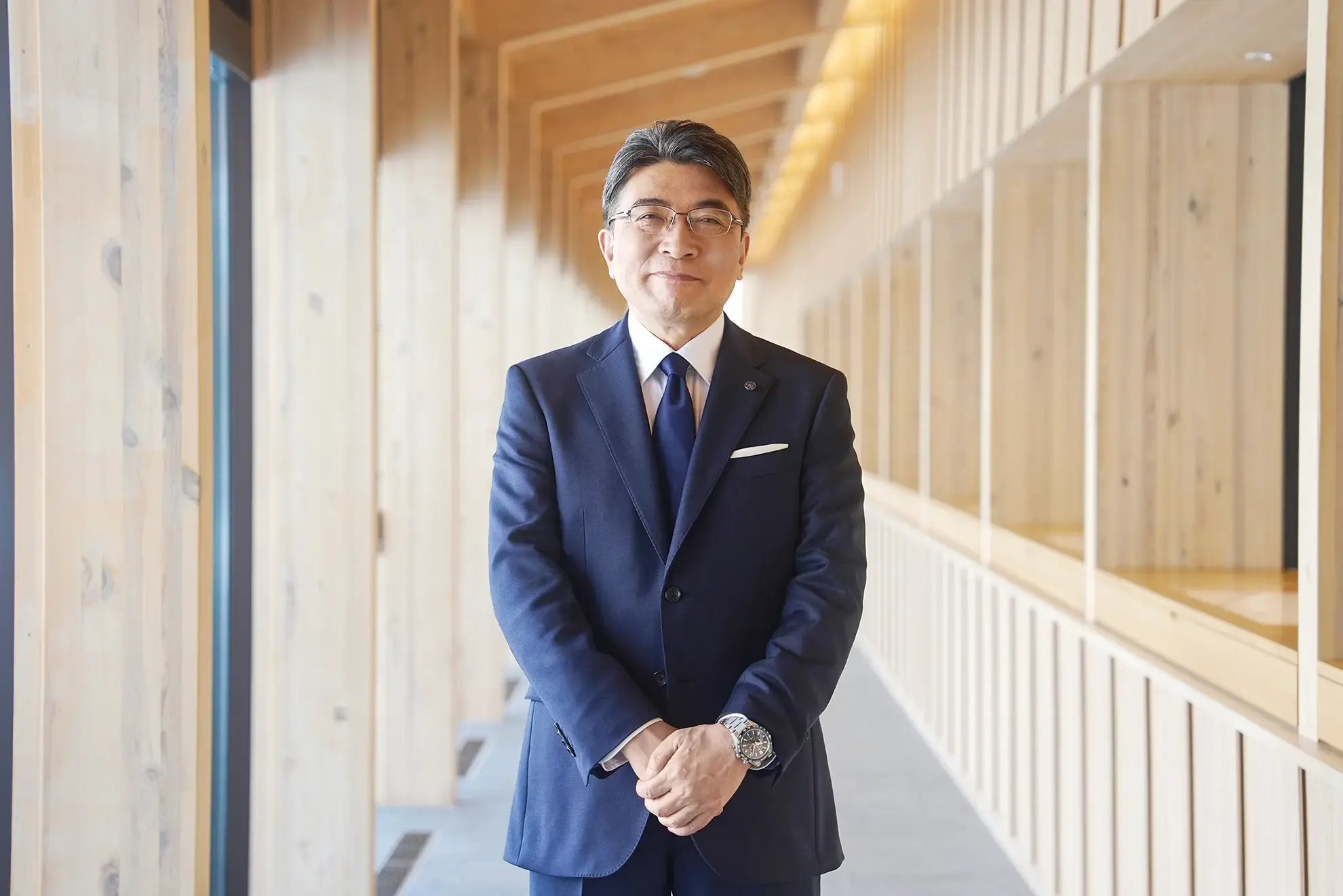
Seiko Watch Corporation President Akio Naito
Haute Horlogerie: The ‘Kodo’
Many years have passed since the launch of the first Grand Seiko with calibre 3180 in 1960. Today, the 9SA5 automatic calibre can boast +5 to -3 seconds, including an 80-hour power reserve. Within the Seiko Group, Grand Seiko is considered a jewel with great sales potential. In terms of price, the majority of the collection ranks well above high-volume brands such as Seiko and King Seiko. In keeping with the name, the company is expanding with ‘great precision’ in the low four-digit to mid five-digit price segment. To this end, regional representative offices have been established in the USA, Europe, and most recently in Singapore for the Asia-Pacific region.
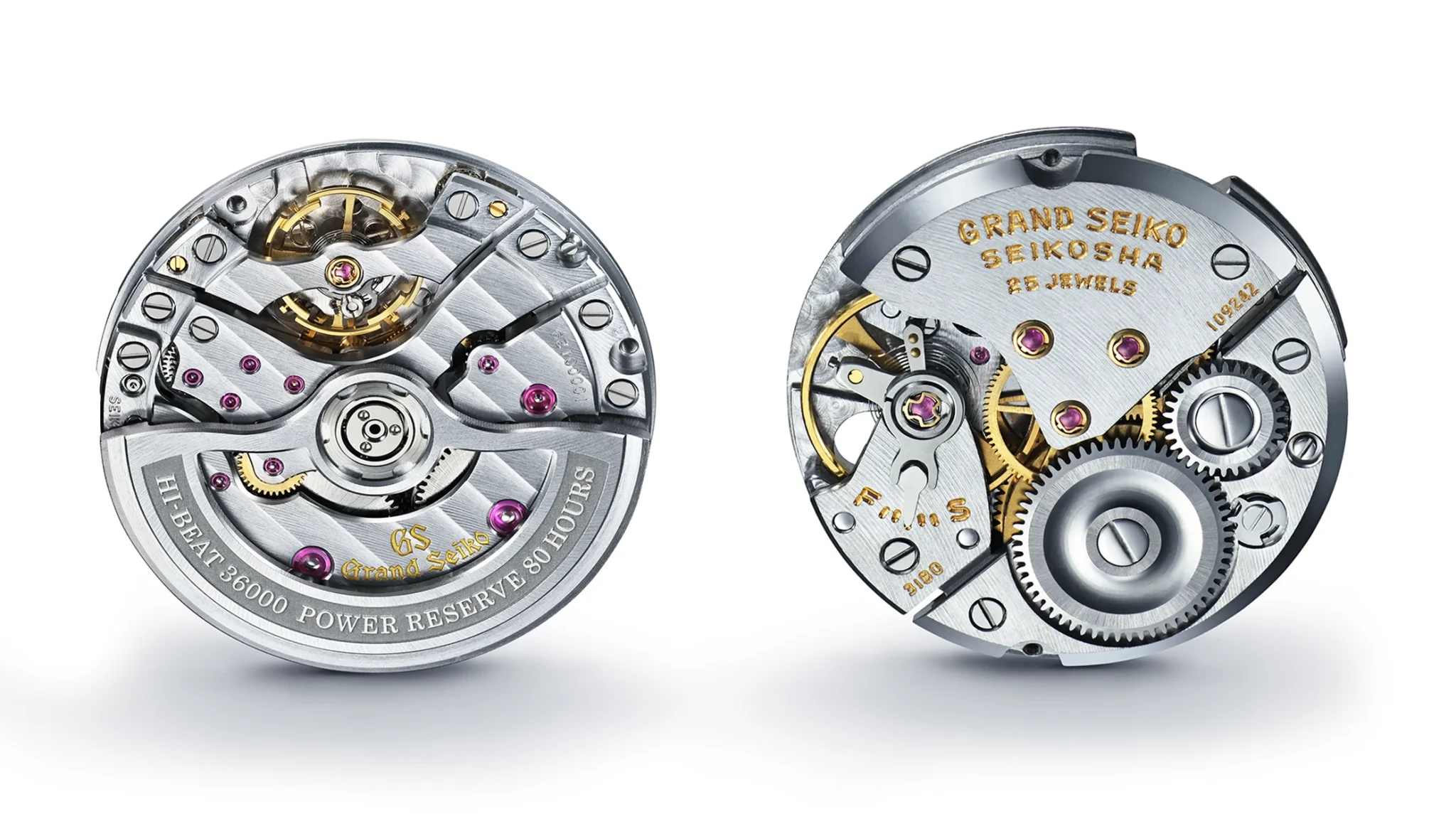
Calibre 9SA5 (left) and calibre 3180 (right)
The aim: to show the big names from Switzerland what Japan can produce. In return, there may also be the odd image reference.
The ‘Kodo’, with its constant-force tourbillon, is exemplary of the Hattoris’ ambition. As the winner of the Chronometry Prize at the Grand Prix d’Horlogerie de Genève in 2022, the timepiece attracted a lot of attention – not only from Switzerland – to the Far East. The calibre was designed by wunderkind watchmaker Takuma Kawauchiya, who was a professional musician in his former life and knows how to charmingly and impressively explain the beat of his music through the beat of a timepiece. The second version of his ‘Kodo’, reference SLGT005, presented in 2024, costs 385,000 euros and is limited to 20 pieces.

Watchmaker Takuma Kawauchiya
In a collection in which high-quality chronometers, chronographs and perhaps even timepieces with a GMT function characterise the brand image, the ‘Kodo’ is a beacon of fine watchmaking. Is it an isolated case? The watchmaker Kawauchiya just smiles at the question – and remains silent. For him, his small workshop is definitely a place where the otherwise very rational, success-driven world of Grand Seiko can become much more full of emotion.
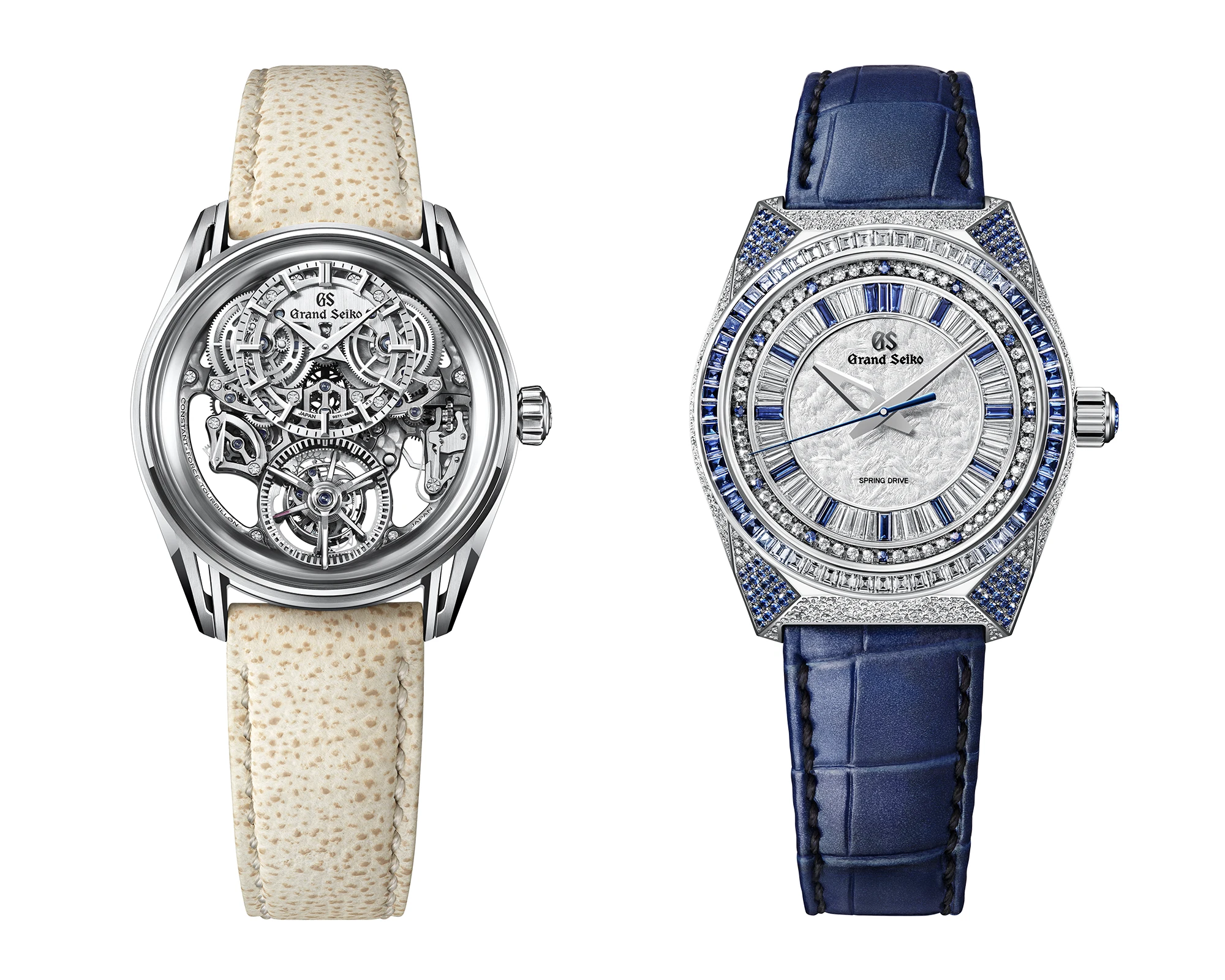
SLGT005 (left) and SBGD215 (right)
Playing with light and shadow: Japanese design for the world
The Grand Seiko collection is divided into five building blocks. There’s the Elegance collection, with its more classically elegant watches. The sporty, robust-looking Sport collection, with chronographs and GMT models. The Heritage collection, which cultivates a certain vintage style. The Evolution 9 collection, which combines tradition and innovation. The models with the latest Hi-Beat and Spring Drive calibres can also be found here. And last but not least, there’s the Masterpiece collection, with ‘Kodo’ and gem-set watches such as the SBGD215.
SBGM221G (left) and SBGJ237G (right)
There is no doubt that the brand’s designers draw on the visual heritage of decades gone by. Classic elements dominate, and the 44GS model from 1967 is considered a style-defining model, while the elaborately pressed dials give many watches a unique look with often colourful accents. The respective texture is pressed onto and into the dial with up to 200 tonnes of pressure. In their designs, the designers at Grand Seiko talk a lot about the play of light and shadow, an approach that can also be found in Japanese architecture. The interplay of matt surfaces, flanks and accents polished to a shiny mirror finish using the zaratsu technique is typical of the brand’s designs today. The aim: to produce timepieces in accordance with the rules of Japanese aesthetics that convey both technical precision and the beauty of the country – and thus appeal to global tastes.
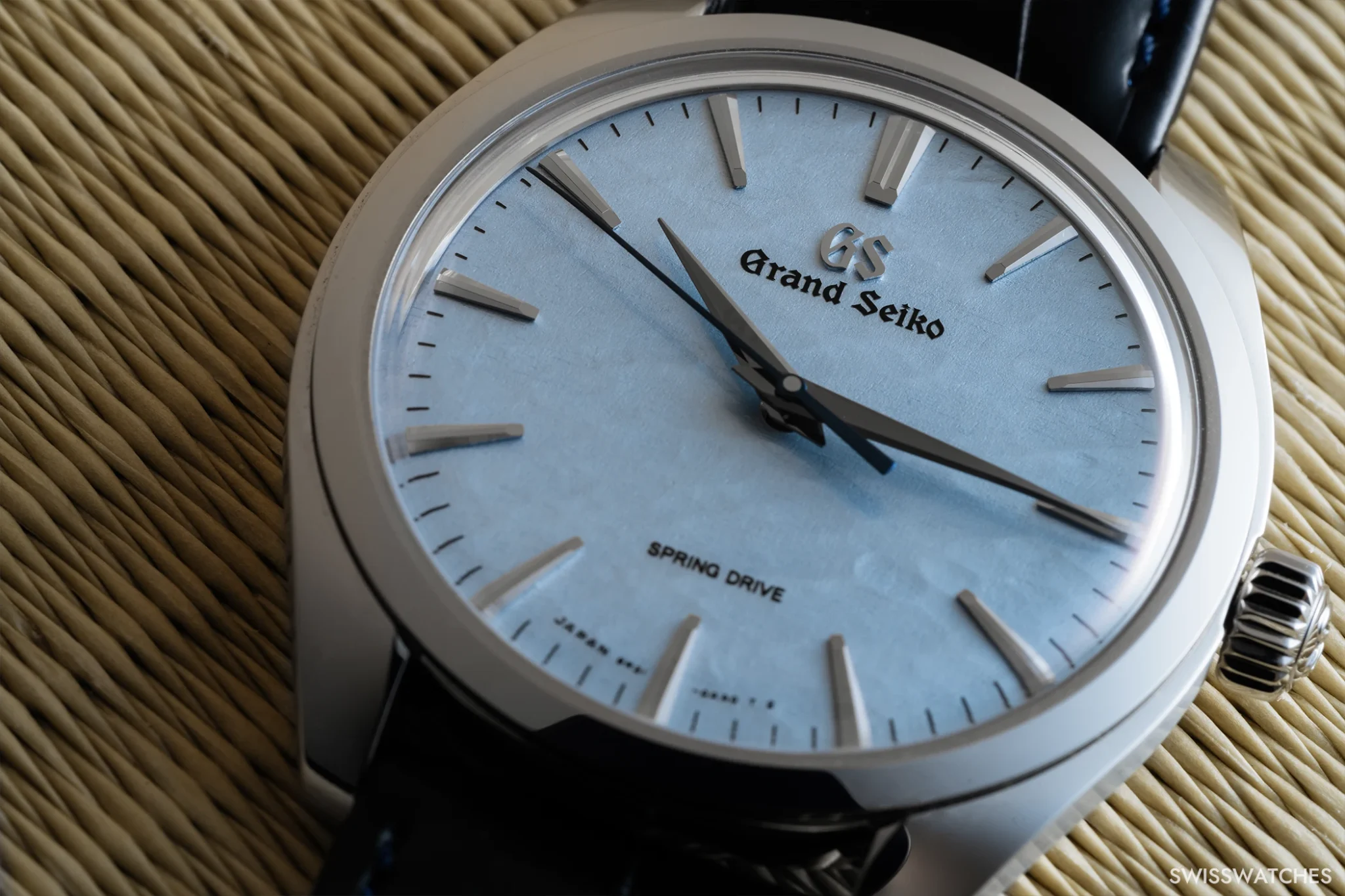
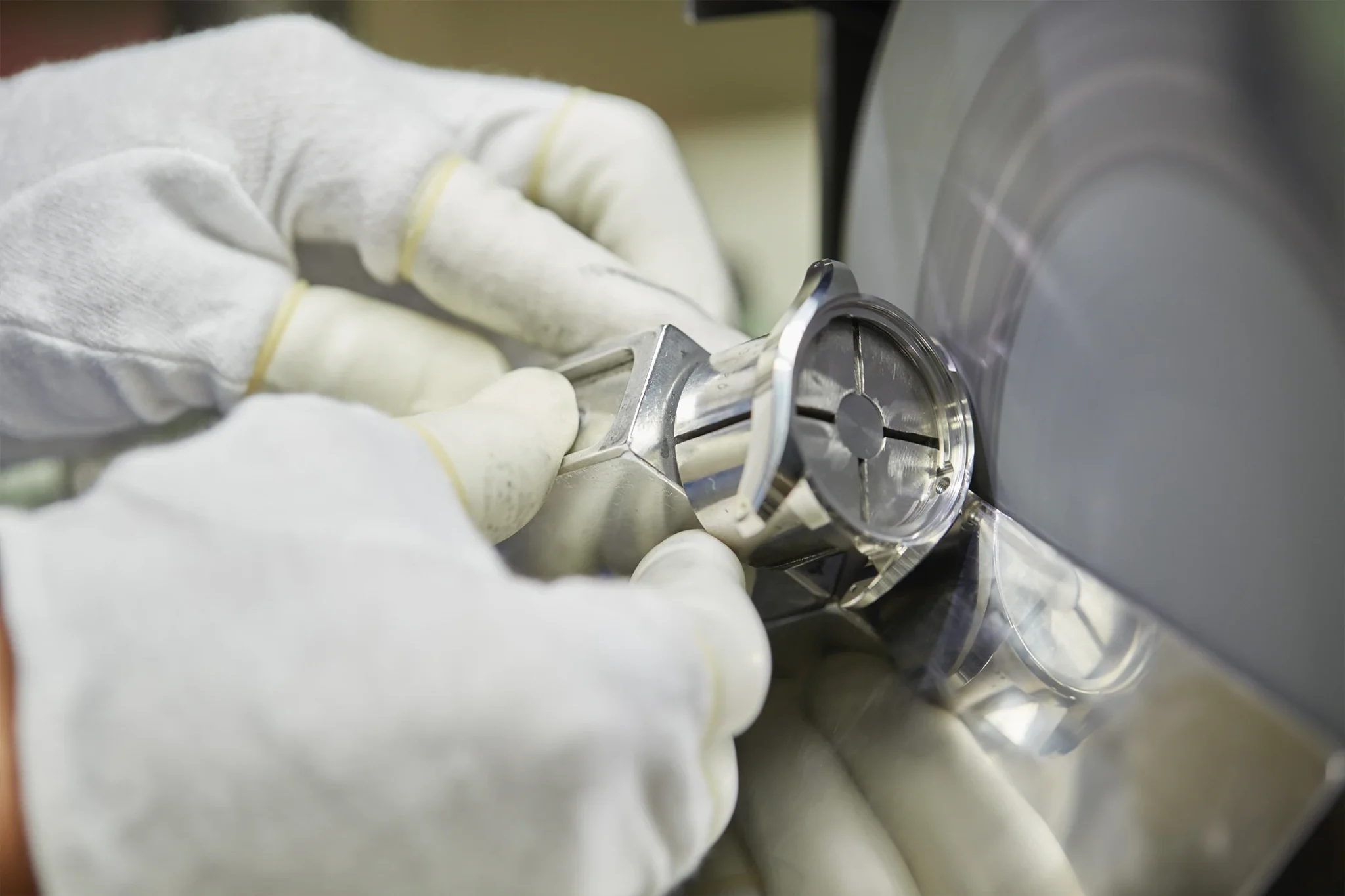
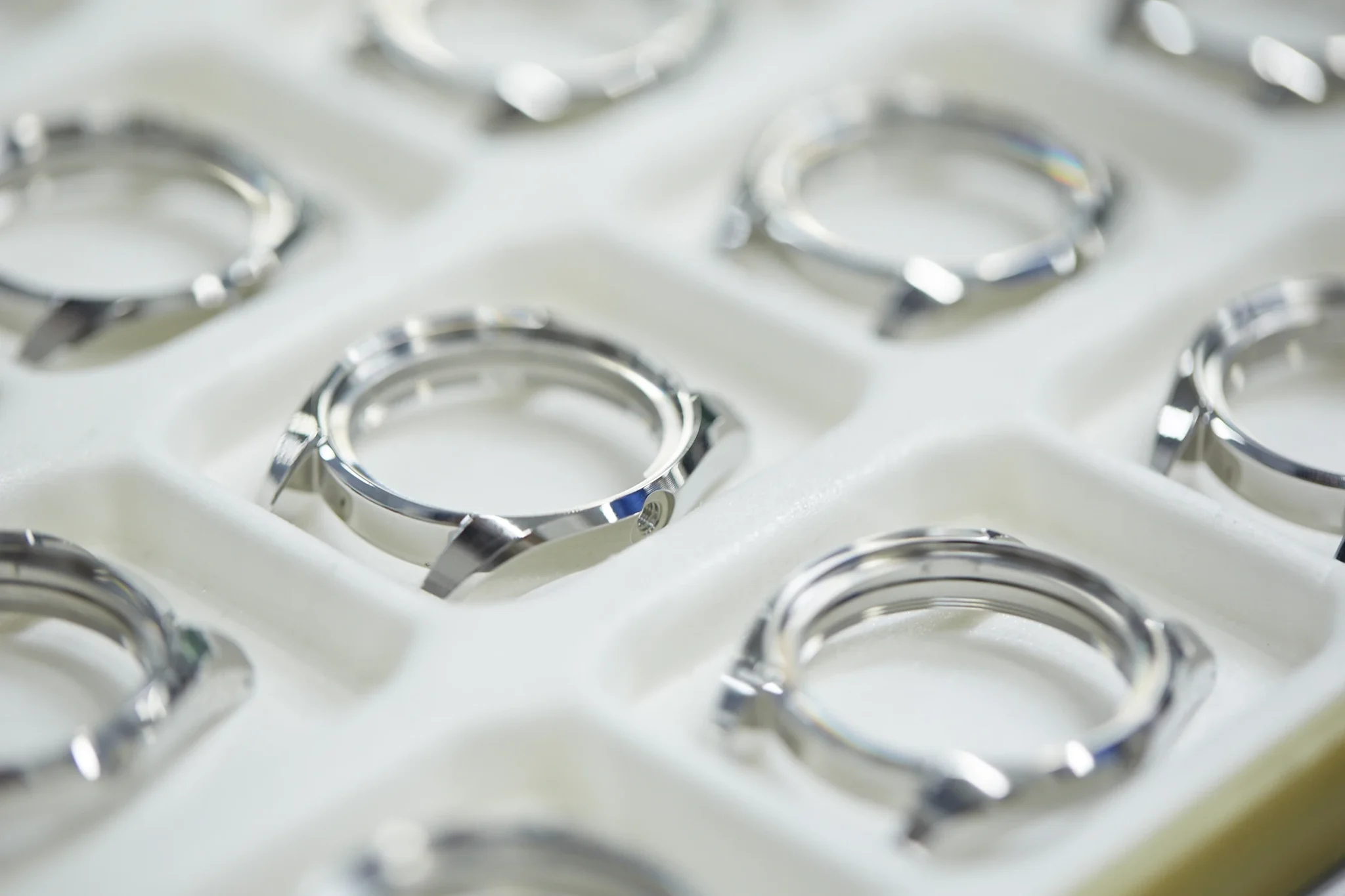
Akio Naito then explains his understanding of the ‘Nature of Time’, according to which, for example, the SLGH027 is inspired by the mountain ridges of Iwate, but the frosty appearance of the watch can evoke memories of various moments in the snow for customers worldwide.
A confident presence: Grand Seiko in Europe.
Probably the most impressive boutique for European customers and the most important representative office for the company is located in Paris, on Place Vendome, surrounded by all the competitors that inspire top performance in Japan. The French metropolis is also home to the company’s European headquarters, and while the famous Ritz Hotel to the right and the Chaumet jewellers to the left present themselves in European grandeur, Kengo Kuma was also at work here with his unfailingly clear vision.
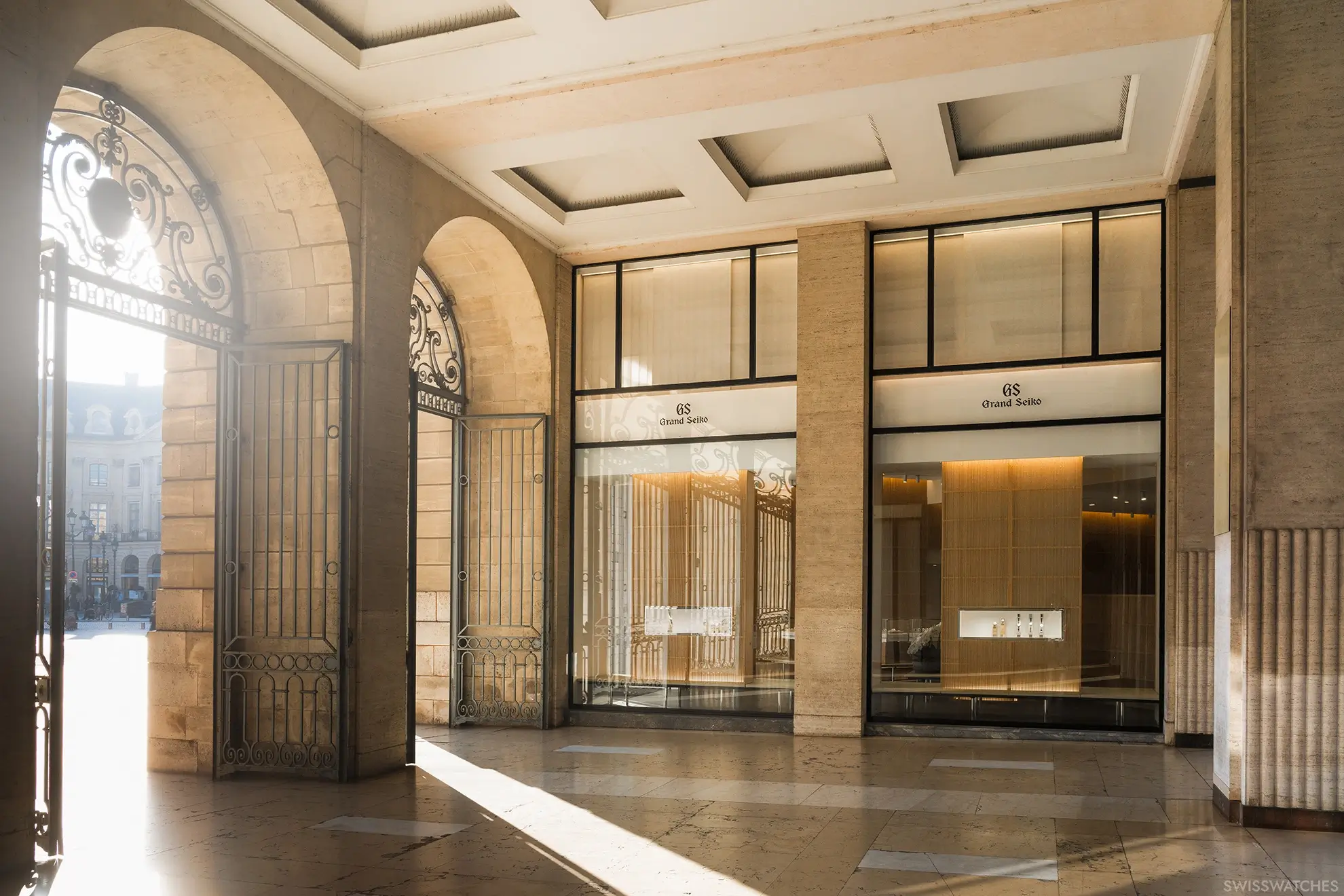
Grand Seiko Boutique Paris Place Vendôme
There is really nothing here that evokes Japan with its Pokémon figures, manga comics and tea ceremonies. Rather, it’s all about the watches from the Far East, their elegance and clear lines, and a sophistication that delights at second and third glance with ever-new details.
That’s why, compared to the biggest names in this watch segment, Grand Seiko may still be a newcomer – at least in Europe. However, the brand has long since made the leap from an insider tip to a highly respected competitor.
The company’s executives have also learned from past mistakes: in the future, Grand Seiko models will no longer be offered alongside the more affordable Seiko models in the same boutiques. The very different brands with very similar names had caused too much confusion among customers.
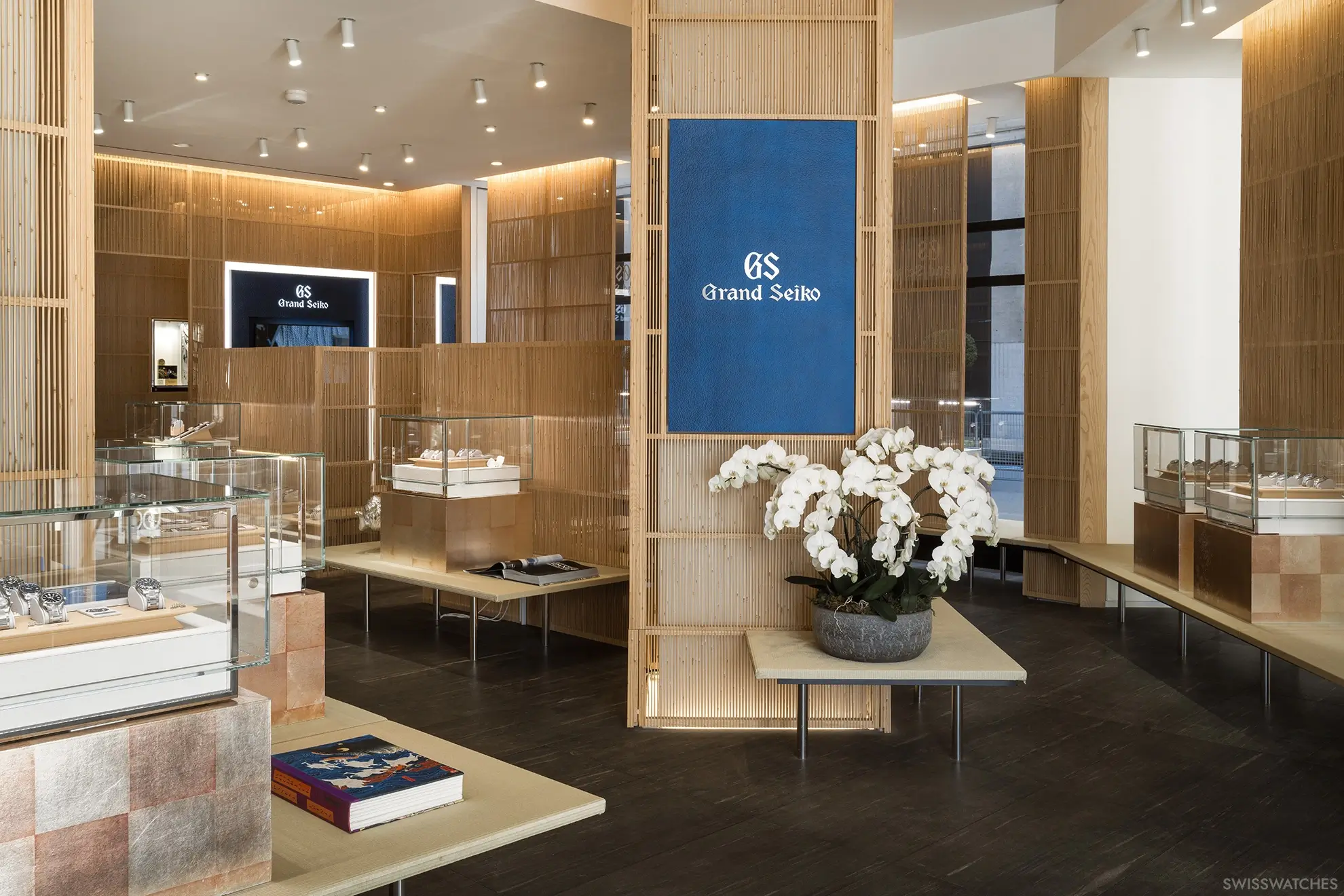
Rather, Grand Seiko is now positioning itself as a completely independent brand – one that may still need some explanation here and there. But also one where, at the mere sight of a seconds hand, powered by a high-frequency automatic calibre or the latest Spring Drive technology, it becomes clear: Japan is, for many a good reason, a place of longing for so many.
